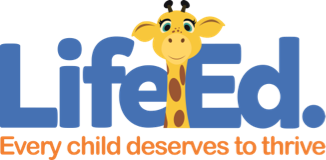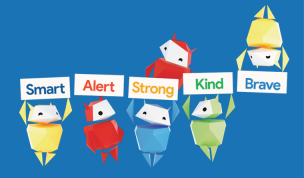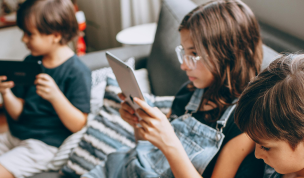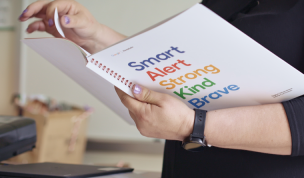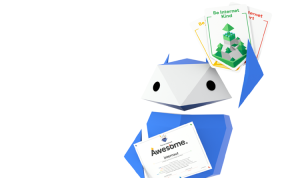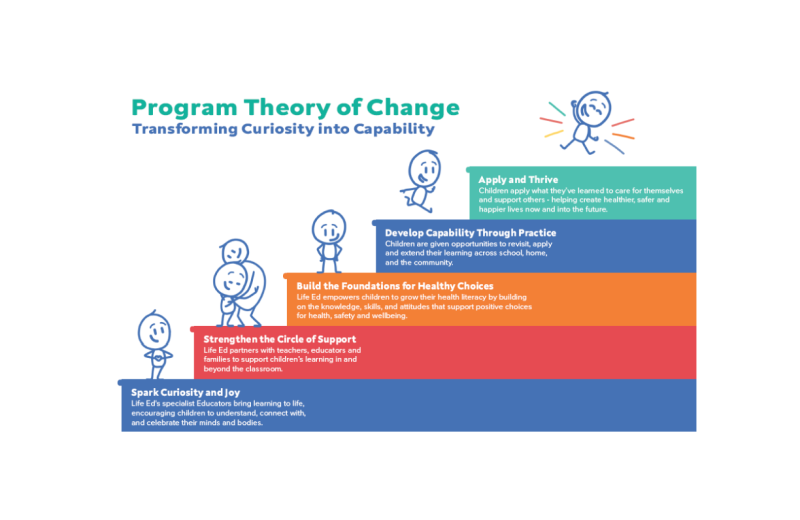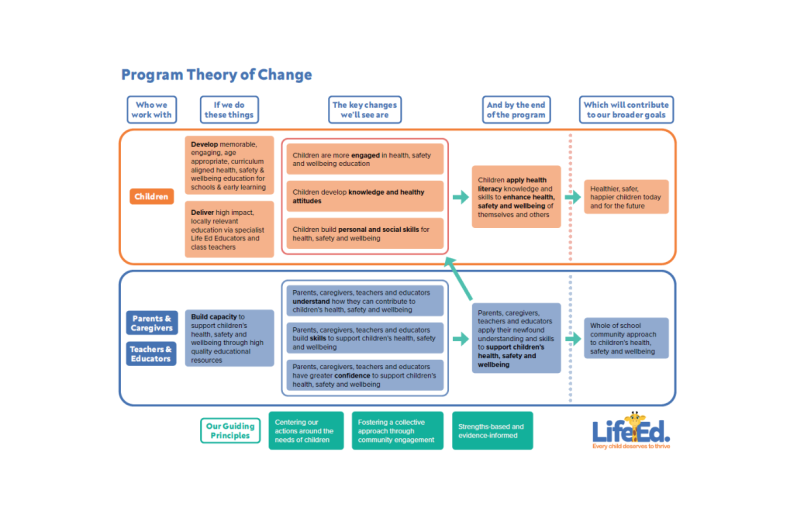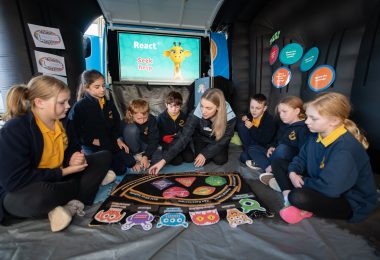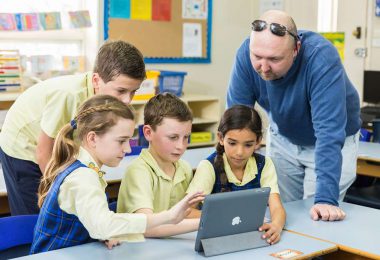Our Program Theory of Change

We have a powerful goal:
To elevate childrens’ health literacy.
What is a Theory of Change?
It’s a clear roadmap for how we drive impact, and why it works.
Our Program Theory of Change maps out how our unique approach creates positive changes across generations and communities.
Our why
Children are at the centre of everything we do. Our goal is to contribute to the development of healthier, safer, happier children, now and in the future.
Our how
We work together to deliver education.
We build children’s health literacy through engaging, evidence-informed, curriculum-aligned education programs, delivered by specialist Educators, in partnership with the trusted adults in their lives – their parents, caregivers and teachers.
What is health literacy?
Health literacy is so much more than knowledge. It’s about developing the attitudes, personal and social skills, and behaviours that empower children to seek out, critically evaluate, understand and act on information to stay healthy, safe and well.
Reaching kids when it counts
The evidence is clear
Building health literacy in early to middle childhood, with school-based education is a widely recommended approach, that will set children up for healthier, safer behaviours that can support better outcomes now and in the future.¹’²
And it’s not just about kids
Health literacy is built more effectively when trusted adults, including teachers and parents, are involved in the process.³ That’s why we take a collective approach in and beyond the classroom.
This is the foundation of our work
Our Program Theory of Change is grounded in over 45 years of experience, emerging research, and collaboration across our national Network.
It’s our blueprint for delivering the greatest impact to as many children as possible, by bringing learning to life, together.
References
1 Bröder, J., Okan, O., Bauer, U. et al. Health literacy in childhood and youth: a systematic review of definitions and models. BMC Public Health 17, 361 (2017). https://doi.org/10.1186/s12889-017-4267-y.
2 Otten, C., Kemp, N., Spencer, M., Nash, R. Supporting children’s health literacy development: A systematised review of the literature. International Journal of Educational Research 115 (2022): 102046, https://doi.org/10.1016/j.ijer.2022.102046.
3 Developing health literacy skills in children and youth: Proceedings of a workshop. Washington, DC: The National Academies Press (2020). https://doi.org/10.17226/25888.
